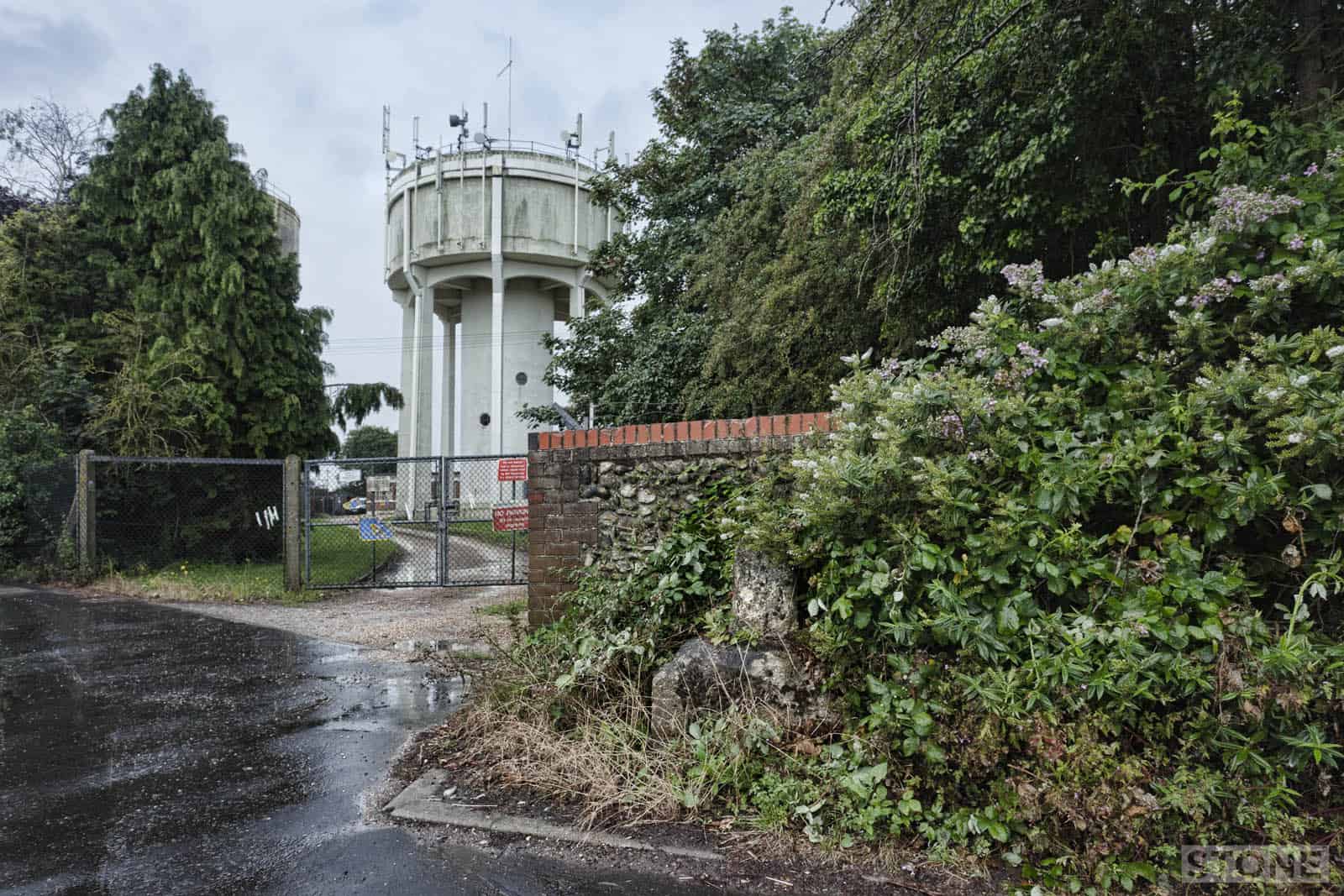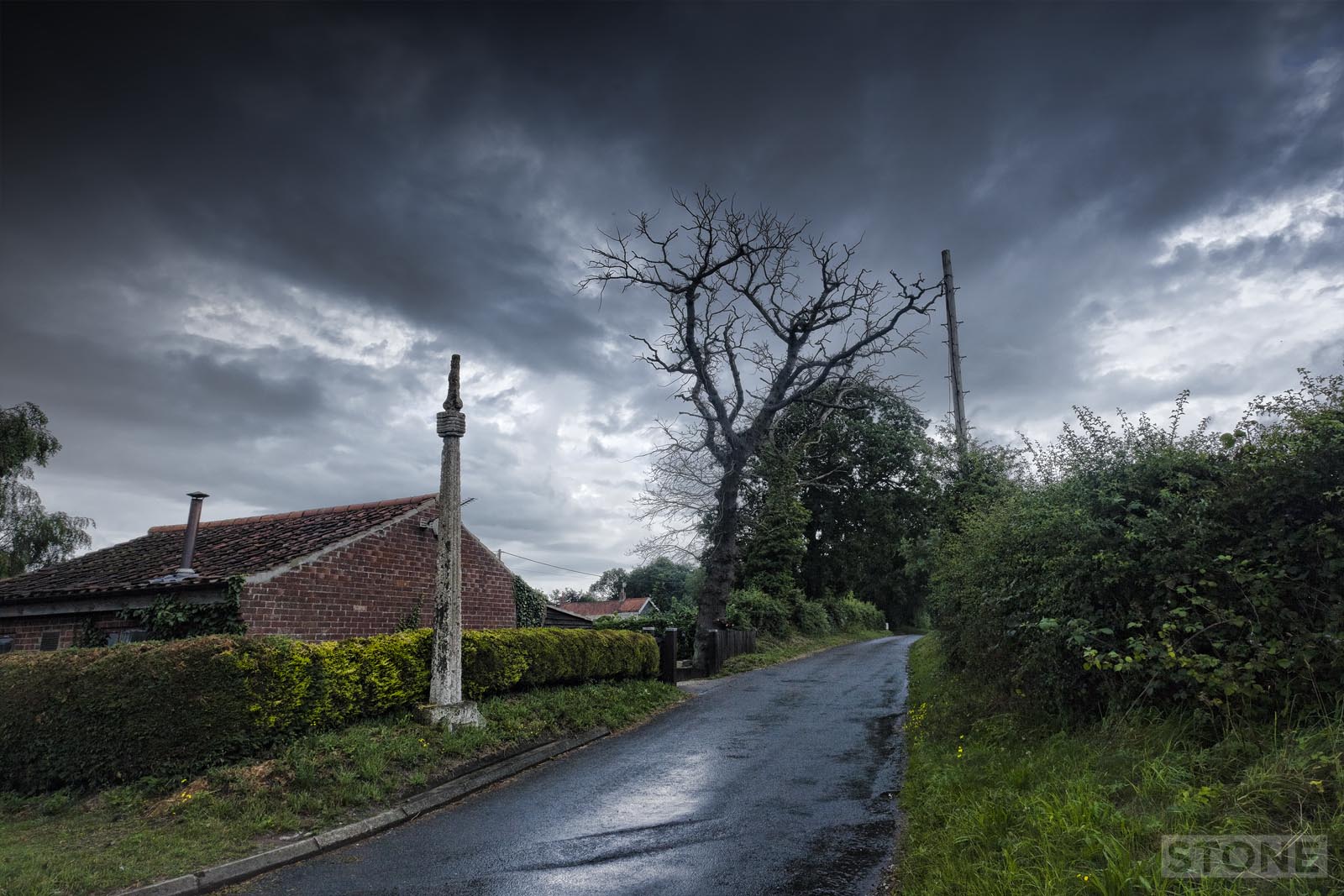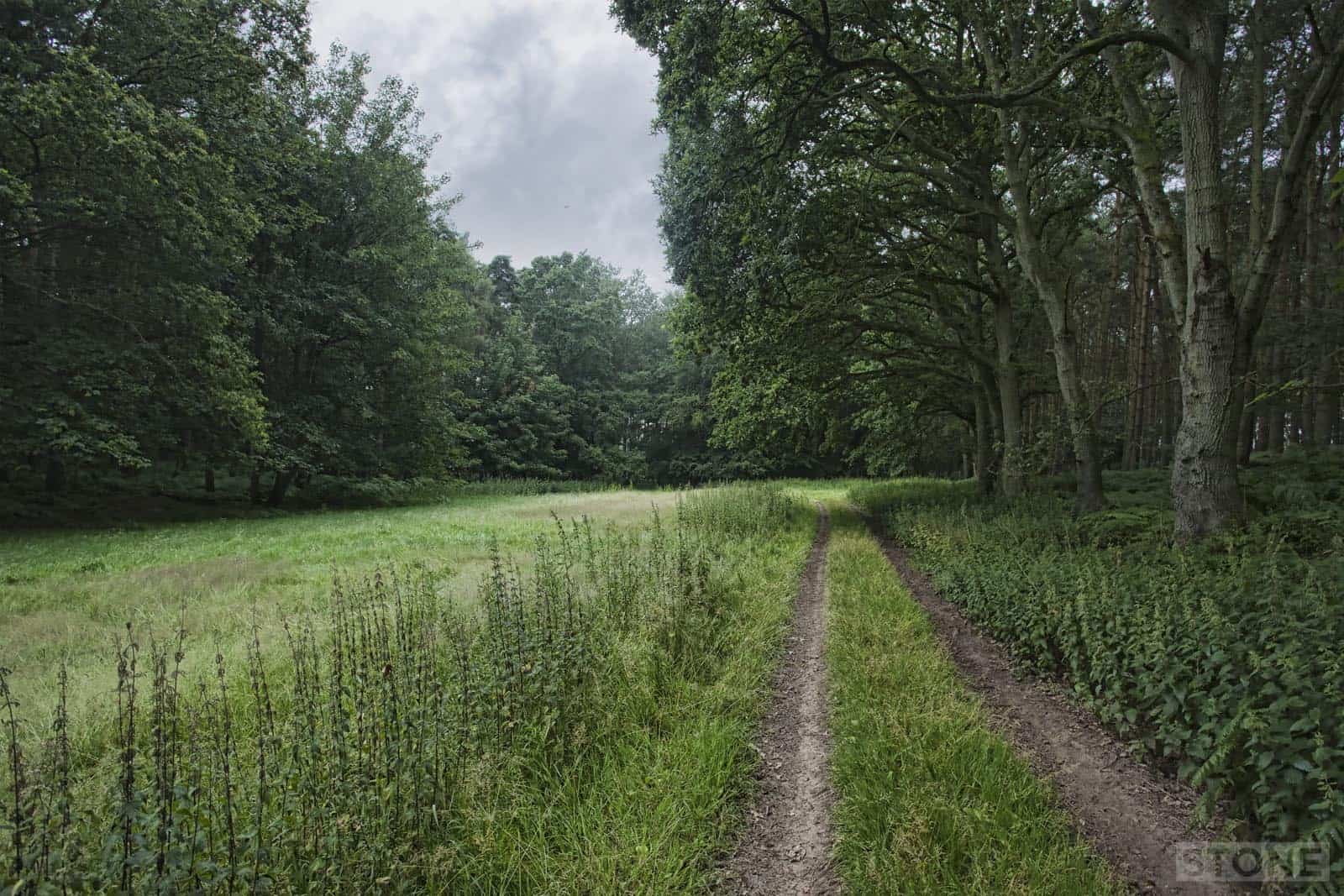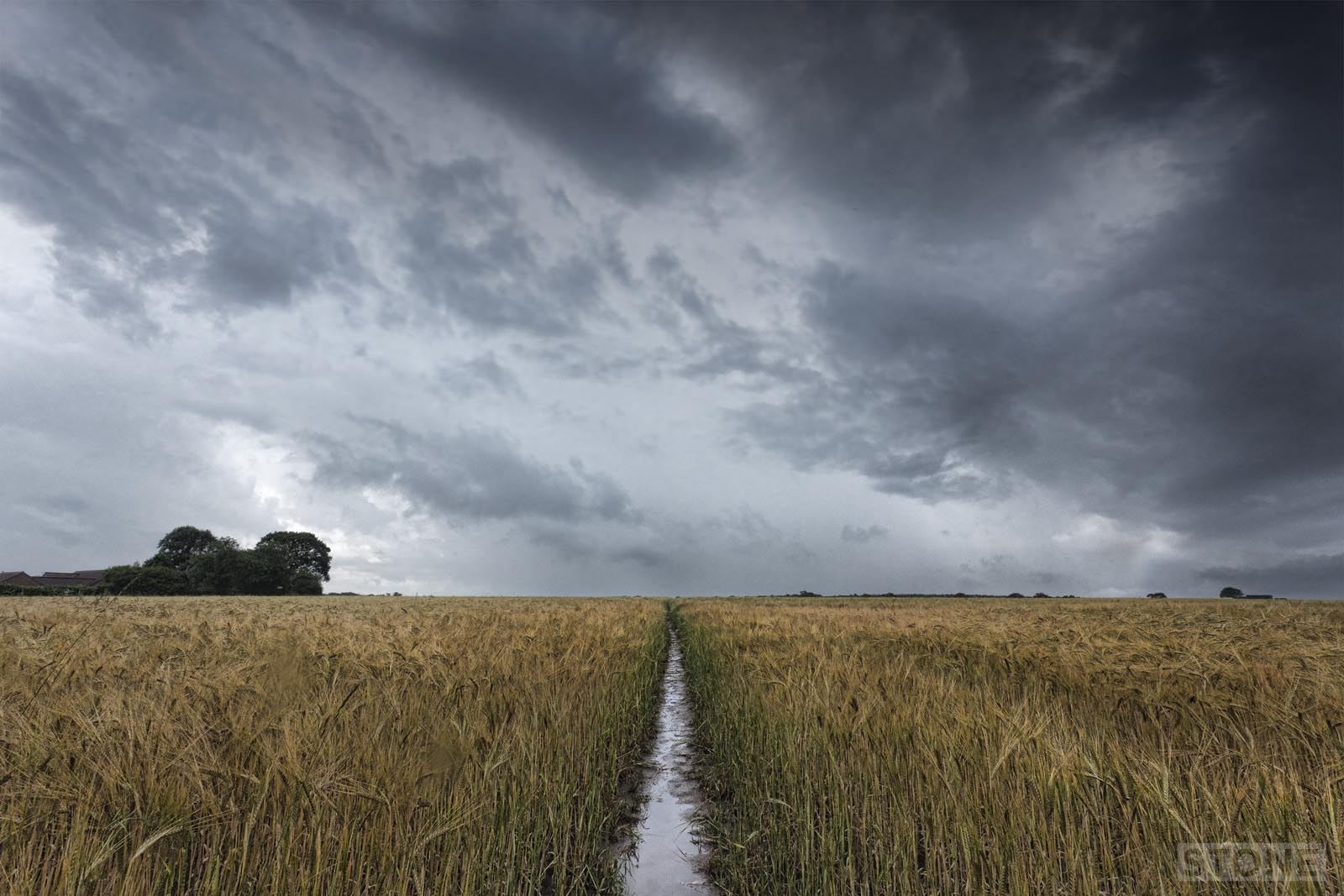I found myself with a few free moments on Sunday afternoon and after some deliberating with tea and fags decided the best option was to tick something off my lists of things I wanted to go and see and do. So, I ended up in North Walsham, a market town I’d lived in for fifteen years from squab to teenager. My mum and dad, tired after a life of travel with the RAF, deposited us in a county my mum liked because she had nice memories of being stationed at Swanton Morley. Unlike my elder siblings who had lived in the Middle East, Malta and Cyprus and a dad who’d escaped from France and been in India for parts of the Second World War I ended up playing on the old railway line and in the straw in the fields beyond.
Us kids – a mixture of London overspill and the Chinatown council estate, played in the weedy banks, straw bales and old decrepit farm machinery come fine drizzle or hazy sun. Most of us up our end of town went to school at the big modern County primary in Millfield. I de-celled at everything, particularly maths and sport, scraped the eleven plus, and somehow went to Paston. Grammar schools are fierce; the first three years were a clear pointer at how thick you could be made to feel when faced with bright vicar’s son’s who knew their algebra and had seen the inside of a theatre. Somehow by the third year I rose out of it and finished school in mid-table. My late teens were a strange land, my dad had been ill and died leaving me in what I now know was quite a fractured state. I woke suddenly as A levels passed and immediately left for Norwich. With a couple of exceptions, I’ve never really gone back – through, yes – on the way to the coast. One school reunion thing, and a weekend stay on a mate’s settee in 1985 then a gap until I went to the pub with a couple of friends about in 2013. But not really back-connect-back. Returning with purpose felt slightly surreal.
As I left the city it was cloudy with a vague hint of rain, the roads patchy wet and dry. By the time I reached the Westwick Estate with its pretty little vistas appearing through the fat rolls of the countryside so typical of north Norfolk, the cloud had thickened and started to push out huge dashing drops. I swung down into the dark turns of Captain’s Wood; a plantation style remnant on the edge of the town’s blasted heath land. The weather changed, heaving down great stair rods, fat drops lathering the road into traction-control hell. I slowed past the target destination but decided to head in and park up on the wide old market place and wait it out. People swept by searching for cover in doorways as the storm passed shrieking overhead.
I spent ten minutes in a reverie of what used to be; Mathis, a cake shop and next to the car was where Woolworths was with its cheap record bin, shoplifter’s heaven, Telefusion for TV, Radio and chart bound vinyl, Big Fry and chips on the market cross on dark night after the pubs had tipped us out. The same pubs where underage drinking was a fundamental part of the process, serving you for as long as you didn’t cause a fuss. A curious reverse, suddenly the whole place is temporal hinterland where time stalls and everything winds backwards.
What was the heath is to the south of town either side of the B1150 Norwich Road, is not heathland now and hasn’t been for several hundred years. It is far more the countryside described in Mal Peet’s account of ‘Borstead’; his fictionalised North Walsham; a codex for his life in Market Towns in Norfolk; the corn and the clouds, the phalanxes of maize, the dark trees and isolated hunched farm buildings, sharp fingered spalted-elm skeletons silhouetted on the skyline against ragged cloud, dirt tracks that veer away – disappearing over rises in the land, patches of trees and copses which crest and shrink on the horizon as you move. There’s a strange disconnect between traveller and resident, the roads for vessels, the tracks the domain of the local farmers, the people, the dwellers.
On the edge of North Walsham are the twin towers, the Waterworks and pumping station which provide the thirteen thousand inhabitants with clean water. These, with the Market Cross and the crumbled giant of a the church tower of St Nicholas; a memory of a wool-rich past are the material built objects that identify the town. The Market and church are the official tourist badges; pretty and historic, the twin water towers are the factual engineered reality of a still developing rural environment. All of them the symbol you see across the gently curving glacial tills and crag that make up the fields as you approach the town from Norfolk’s interior. They stand there pale painted, streaked green by time. The trees that surround them have grown over the last 30 years — the towers slightly lost, less of a statement than they were. In the same way, Smedley just down the road has vanished, one of the main employers gone, a pile of rubble in a field. The line of poplars along the old drive on Station Road felled for more than 20 years, Crane Fruehauf and Wall engineering shrank or vanished, changing character of the settlement, population and skyline.

Out on the road there used to be three crosses; medieval markers, establishment warnings of folly, threats from the order, in stone. The first as you exit the town is at the foot of a wall next to the water towers, overgrown by shrubs and weeds. It is a little lost, time and nature enclosing it. It once would have stood taller than a man. There is though a question as to whether this is in fact a memorial to the battle that took place, but it has been consumed by the legend and either way is now part of it. It’s curious standing in the rain looking at it, trying to compose a shot that doesn’t include a bright red slightly dented Nissan stuck on the pavement.
This spot is parked in my consciousness as clear as it is in reality. At school we had a cross-country run. Twice a year the whole school would turn right and pass here, the forerunners loping off into the corn like hares, the rearguard puffing along five minutes behind waiting to be out-of-sight of the markers so the older lads could spark up a smoke and walk into the field whispering and laughing. My memory is of rain, frost and hail, discomfort, cold fingers, each rasping breath a bellowing cloud of steam in the spring and autumn air. We’d saunter across here – this more-or-less forgotten battlefield, vaguely aware, unknowing or uncaring of all this, this history beneath our feet, the distracted talk of 14 year-olds things, girls and music and jokes about teachers, mostly hating every second of the imposition of being made to exercise in public, in a vest. The run would head off towards Felmingham where the main protagonist of this hate-filled trip into the past, Geoffrey (or Jack) Litster (or Lister); our local Wat Tyler had lived. We ran, shuffled and walked from where he ended up to where he came from and ended up again.
The year is 1381, Europe is three-quarters of the way through a dire century of remorseless drudgery and death. Around half-way the pestilence has halved the population of Europe, the Hundred Years’ War trundles on regardless costing a vainglorious fortune. The workforce reduced in numbers should in theory be in a good bargaining position for wages, but even trades are held in place, stuck in serfdom to the landowners, the church, the lords, and the king. To fend off rises in wages new laws are introduced to lock them back into controlled poverty, movement becomes a luxury the poor are not allowed, they, or we are merely human cattle.
A new tax arrives to raise funds to further finance the war with France; the Poll Tax; a name since re-energised – one that resonates even now. In an attempt to avoid it people vanish from registers, a third of Essex disappears. The Treasury suddenly confronted by mass non-payment instigate a system of collection, the reviled John Bampton at its head. He barges into Brentwood trying to collect the shortfall, his officers checking under the skirts of young women with the excuse of seeing whether they are intact further inflamed the situation – Asking for money is one thing, the establishment perpetrating sexual assault another entirely. The peasants further enraged arm themselves with tools of their trades, or weapons picked up and stolen along the way; Billhooks, longbows, knives, staffs and sticks. They were more than angry, this was a revolt against the corrupted controlling state, the status quo. Bampton escaped but several of his officers didn’t. The situation had been badly misread, the population were ready, organised; a network of unrest coalescing around figureheads. Messages are passed and the confrontation spreads; the South East; Essex, Kent, London, Suffolk and Norfolk. The counties catching fire fire, enter the figureheads – Wat Tyler, Geoffrey Litester, et al, and an insurrection begins.
This is a big story, too big to fill with details in a small space, there’s books and books on it. What concerns us is part of it, one core incident really, and it is here in a quiet little field in North Norfolk where the Battle of North Walsham takes place. Our local leader Litester was a dyer, he and his men had joined the general melee. Maybe he had a big mouth, who knows, but he became de-facto head for the north and east of the area. His group of rebels joined with others and moved around heading to Lynn, Swaffham and Great Yarmouth, finally descending on Norwich – one of the three biggest cities in England at the time. They began burning tax and court records as they went, throwing in a spot of pillaging. Finishing up where all good Norfolk rebels do; the heights of Mousehold. The Knight, Robert Salle, a then respected figure was called upon, either to talk them down or be talked into joining them. Either way it was not a successful venture, Salle while flailing at the men below his horse was dragged down by Billhooks. He succumbed, his skull split like a mangold allegedly administered by his own serf. Norwich was attacked again with more force, more destruction, more death, followed by retreat to Thorpe Market and North Walsham.
This was never going to be easy for a largely militarily untrained group of guerilla dyers, bakers, and agricultural workers, especially not when you have a bishop with real military training; enter stage right — Henry le Despenser, the fighting bishop, an odd career combination perhaps in modern terms. But he had form, had already laid siege to Italy. Despenser rode down across Peterborough with an army to hand and waited on the heath.
I went and stared at a field. It rained quite hard, I got wet, lightning split the air from cloud to ground, thunder shuddered and wobbled over Bradfield to the North. The rain drops thickening, my hair matted down, jacket soaked through. There’s no cross-country any more, but a ribbon of water reflecting the sky, beaten by our feet still marking the public right of way to Felmingham. Despenser may well have ridden here with his men looking for Litester and the rebels; planning their despatch before moving on to new jobs a year later besieging Ypres in Flanders in wars for cloth markets, to head off to fight the Scots, and go after the Lollards. This field in the past’s dry summer days, shafts long and grain heads full and dusty yellow, fostering nests of corn beaten down by clumsy young couples fucking. Now it drips still and green in the solid humid air, history humming away beneath.

The next marker of the Revolt is on the corner of Toff’s Lane, now Heath Road, 200 metres out of town. It sits just on the grassy bank, the finial broken, the column eroded by bashing carts, our acid air and time. The crucifix has lost it’s arms, a finger pointing at the sky. Nearby sits one of two Monument Cottages, a small place set back from the busy B road. A school friend of mine once lived here at a time when we were still making potato prints and singing songs from the New Moon Songbook at the big county primary not far away on the edge of Chinatown. He walked home through that field to get here every day, played Fu-Manchu, Bulldog and War on a playing field so close to a real story of a massive struggle we just didn’t know, in the shadow of gunshots from these fields, gas powered bird-scarers keeping the pigeons off, the 410s and 12-bore hitting the same – pheasants and rabbits for the pot. We watched these fields on fire, the stubble burning through the seventies and eighties reddening the sky, painting in our sulphurous Cold War fears and dreams; flames crackling in the evenings, hedges lost, houses filled with the smell of burnt straw, wisps of black ash, smuts on sheets on washing lines.
Across the way from the second cross is a path that leads up and over the curve of the horizon, blocked by a big metal farm gate, the path bucks left. Here lies the second monument cottage on private land, the third cross was here and a pightle that wraps around the site. It forms a valley where it touches the woods on the edge of the Westwick estate, where the gate houses just across the field act as markers either side of the old turnpike. I can’t see a cross, I’ve read it has gone. A swift sharp knock on the old gamekeeper’s cottage door makes some unseen hounds ruff and bark, in the cottage field they throw their weight against the doors of a pen. Tiny toads scatter around my feet on the step, no one comes. I skirt back out of the little garden through a tipsy gate and risk a turn round the V cut into the trees, the thunder continues to pound to the North, the rain stops momentarily. Trees drip in the growling stillness.
The Rebel men and women may lie here, their corpses in a copse — nobody knows exactly where. Folk tales talk of trees near the Heath. Stories shift, but it appears the revolt was quelled, it was swift and murderous. The peasant stock scythed down by a honed and trained superior force. Their remains hurriedly dug in and buried or flung down in the trees to be picked at and spread by foxes. Some escaped including Jack, running across the heath and on into the waving barley. They hid briefly like game birds, heads down, eyes twitching, breath shallowed near the earth under the crop.
Despenser’s men soon flushed them out. Jack was dragged away, immediately condemned. The bishop took his confession, absolving him of his sin — the sin of a wish for change — he cradled his head as he was dragged away so he would not smash it on the ground. Jack was hung, then drawn, once dead, quartered, his parts carried away, distributed to the hearts of the local rebellion, one quarter reserved to decorate his home in Felmingham, his accomplices existence only remembered by mention in court papers their bodies lost now in the trees.



Lovely evocative and informative piece Nick. I wasn’t a resident of North Walsham but I clearly remember the Paston-bound school bus from Norwich wending its way up the B1150 through Westwick woods and into town past that iconic water tower every school day for seven years back in the 70s. I also have similarly bleak memories of that mud encrusted cross country route!
An enjoyable and informative article on North Walsham history, Nick but you had me just by mentioning Millfield Primary 11+, Chinatown, feelings of academic inadequacy at secondary educational institution and the Water towers, Norwich Rd. all of which were part of my life. ‘Weaving’ the nightmare of the rebellion with recent memories of North Walsham made it more imaginable to me. You made the madness come to life.
The coupling in the fields surrounded by tumescent and ripe corn got me.
Great writing, as per usual.
I came to Paston in the late 70s as an outsider from Brentwood and worse, from a Comprehensive school. The brass on my buttons was too shiny for my year. I accidentally but comprehensively subverted the cross country once. Marking seemed a good way of avoiding the mud and cold. I managed to get through the brief and to my marking point without any knowledge of which way to direct the field. My waving and shouting at the receding lights of Marty’s car went unheeded. In the absence of mobile phones I reasoned that the leading sporty boys would have certain knowledge of the route. It worked quite well for a while but then there was a disagreement. Half the field went one way and half the other. Let us just say that one of the less sporty boys took the winning tape to raised eyebrows amongst the assembled gowns. The next day I caught hell. Had to apologise to the great and good. There were anguished discussions about who to award the win to. I hope there was commensurate amusement amongst the less sporty and tradition minded.
Another great read and your photography is excellent as always.
Really fascinating. My mum was born and raised in North Walsham, and brought us to live there in the early 90’s. I also went to Paston but luckily cross country wasn’t on the curriculum by then.
I’ve recently read up on the Kett rebellion, and the camp up on Mousehold, so I’ll look into this common people’s history too.
I’ll be giving my mum this article to see if it brings up the same memories for her as it does for me.
Another great read Nick. By the way Wall Engineering is hiding behind Crane-Waitrose off the Cromer Road